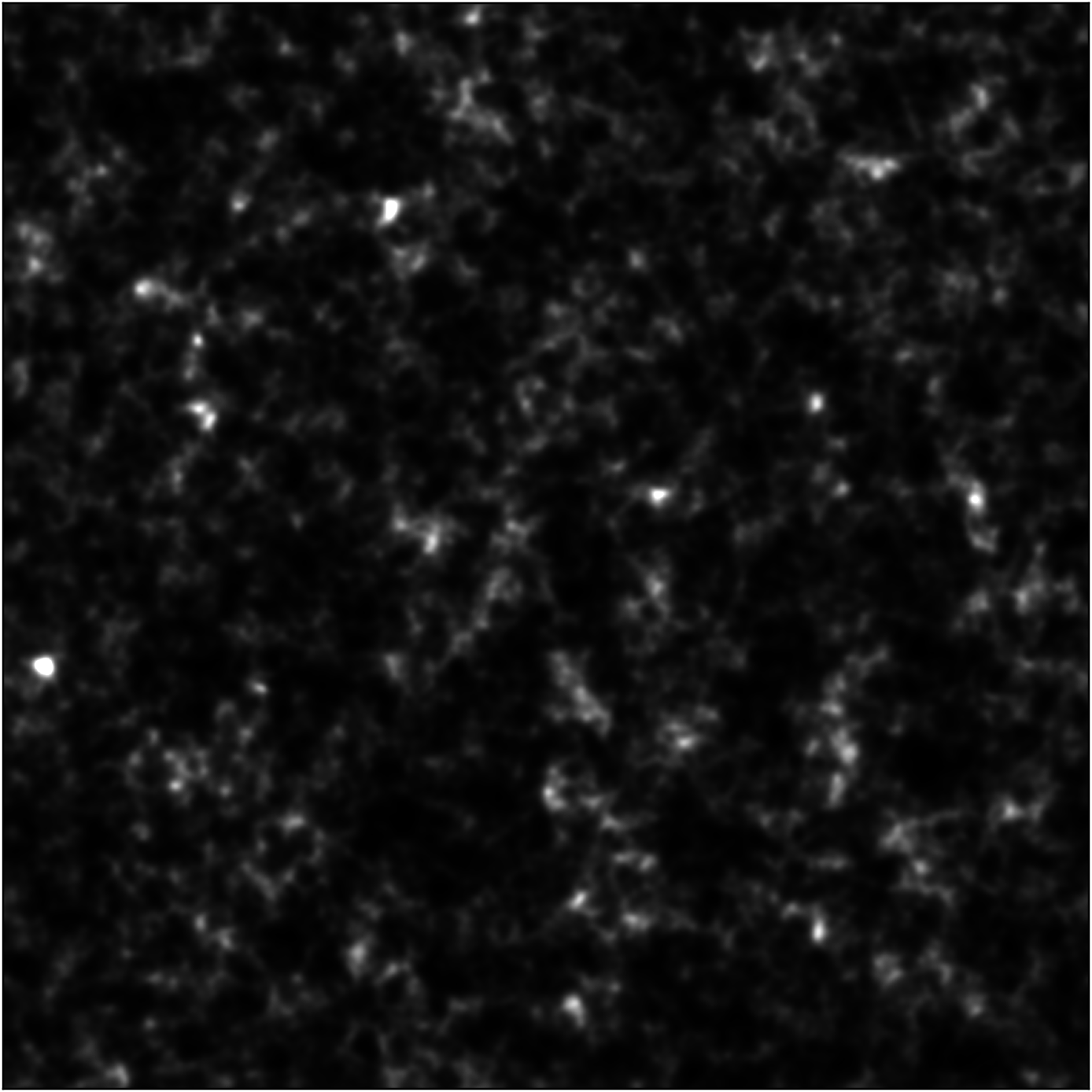Universe generator
This tool uses an emulator built using the twinLab platform from digiLab. This emulator is trained on HMcode predictions, which is then combined with a log-normal field approximation to produce realisations of the matter distribution in the Universe. This is a quick method for generating mock universes, which would otherwise require expensive $N$-body simulations to create. Areas of higher matter density are shown with brighter colours. The region of the Universe shown is 500 megaparsecs across and 1 megaparsec deep. This volume would contain approximately 250,000 galaxies and would take light more than 1.5 billion years to cross.
You can change the density of both dark and normal (baryonic) matter, the Hubble parameter, the inflationary spectral index, and the dark-energy equation-of-state. The other default values are the best-fitting values from the Planck (2018) data release.
